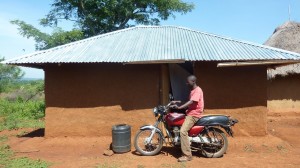Give Them Money or Give them Cows?
-
-
slice.mit.edu
- 1
Filed Under
Recommended
In so doing, GiveDirectly has become both a unique research experiment in Kenya–and a provocative challenge to aid groups operating in the developing world. Can any charity do better with donors’ money than families in the developing world could do with the money themselves?

GiveDirectly’s chief operating officer is Piali Mukhopadhyay '05. Rohit Wanchoo MBA '08 is a board member. Both alums believe direct donations make more sense, and GiveWell, a nonprofit charity evaluator, seems to agree. GiveDirectly is currently #2 in its ranking of charities with the least overhead.
“Our long-term vision is to establish cash transfers as a benchmark for international aid interventions,” says Wanchoo. “Charities and aid groups should be able to make a compelling case for why their projects can do more for the poor than they can do for themselves.”
As This American Life reports, GiveDirectly’s no-strings-attached, $1,000 gifts to families in Western Kenya have had a radical impact on the lives of several villages there. Producers followed Mukhopadhyay as she made her way to prospective villages, screening families for potential funding and negotiating with local chiefs.
Villagers who receive GiveDirectly windfalls, delivered wirelessly via mobile phone-based currency transfers, use the money to buy cows and metal roofs for their homes. But they’ve also started businesses and pooled resources with others to invest in village needs. Over 1,000 families have received money so far.
GiveDirectly’s overhead is nearly nill, and it requires no SUVs, headquarters, or large salaried staffs.
The trend to give money directly to poor families has grown in Mexico, South Africa, and Malawi, where health, school attendance, and domestic issues have all improved in small-scale direct-aid experiments. GiveDirectly’s model is nascent, but leading charity research arms, Google.org foremost among them, are impressed with its data model so far and have cut checks to grow that model.
Others remain confident in the traditional model of meeting developing nations’ needs. Heifer International, which funds gifts of cows to local villagers instead of cash, has long touted its low-overhead, high-productivity methodology. A spokeswoman for Heifer tells Goldstein that she is skeptical of GiveDirectly’s effectiveness, but conceded that a family makes about $950 per year on the gift of a Heifer cow.
An independent analysis of GiveDirectly’s work, due out this fall, is surveying families who have received funding as well as neighbors who have not.
Goldstein co-wrote the broadcast piece with David Kestenbaum of Planet Money. It was coupled with a New York Times Magazine story on GiveDirectly.








Comments
Sarah McManus
Wed, 06/04/2014 9:40am
Here's what the research shows on charitable giving: connecting donors to organizations makes them stick around. This is one of the struggles the Red Cross faces - one and done, "throw money at strangers" donors come in and help when a crisis arises, but disappear quickly.
So sure, fix the roof. But I don't see the comparison to helping the weak and the oppressed - women in particular - gain footing in their communities,be able to sustain themselves after the donors have left, and get education that frees them from dependence on handouts.
I support Heifer because they aren't throwing money at the status quo. Their overhead goes to hiring smart people who choose animals and methods that respect the communities in which they're placed. It also goes to transporting animals, creating networks for vaccination, veterinary care, and for training. I think that's worth paying for.
Some of their money also goes to showing me what they're doing and helping me feel connected to it. It attracts others to our cause and keeps opening my heart and mind. Sustainability is the goal of any organization that needs to pay its own workers to do smart things over a long period of time, profit or nonprofit. I frankly think that evaluation charities simply by looking at their overhead is naive.